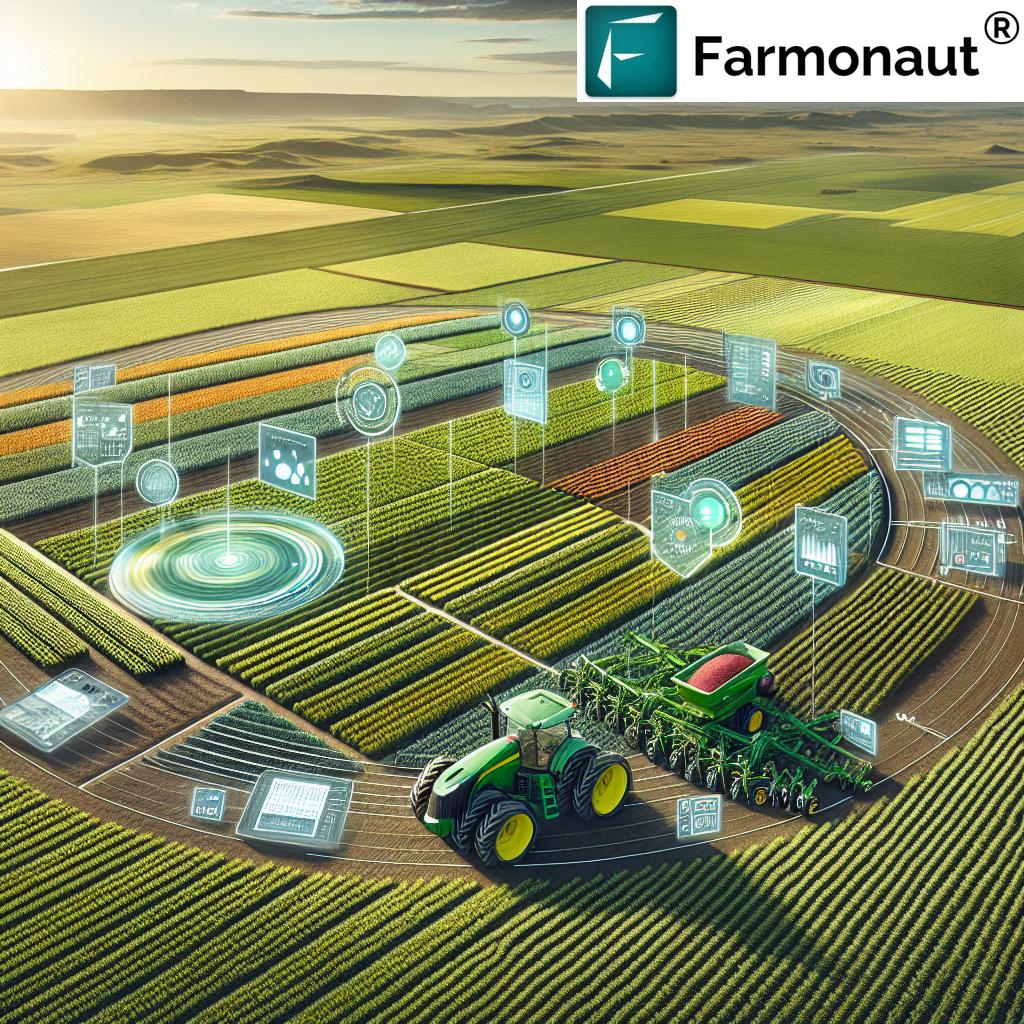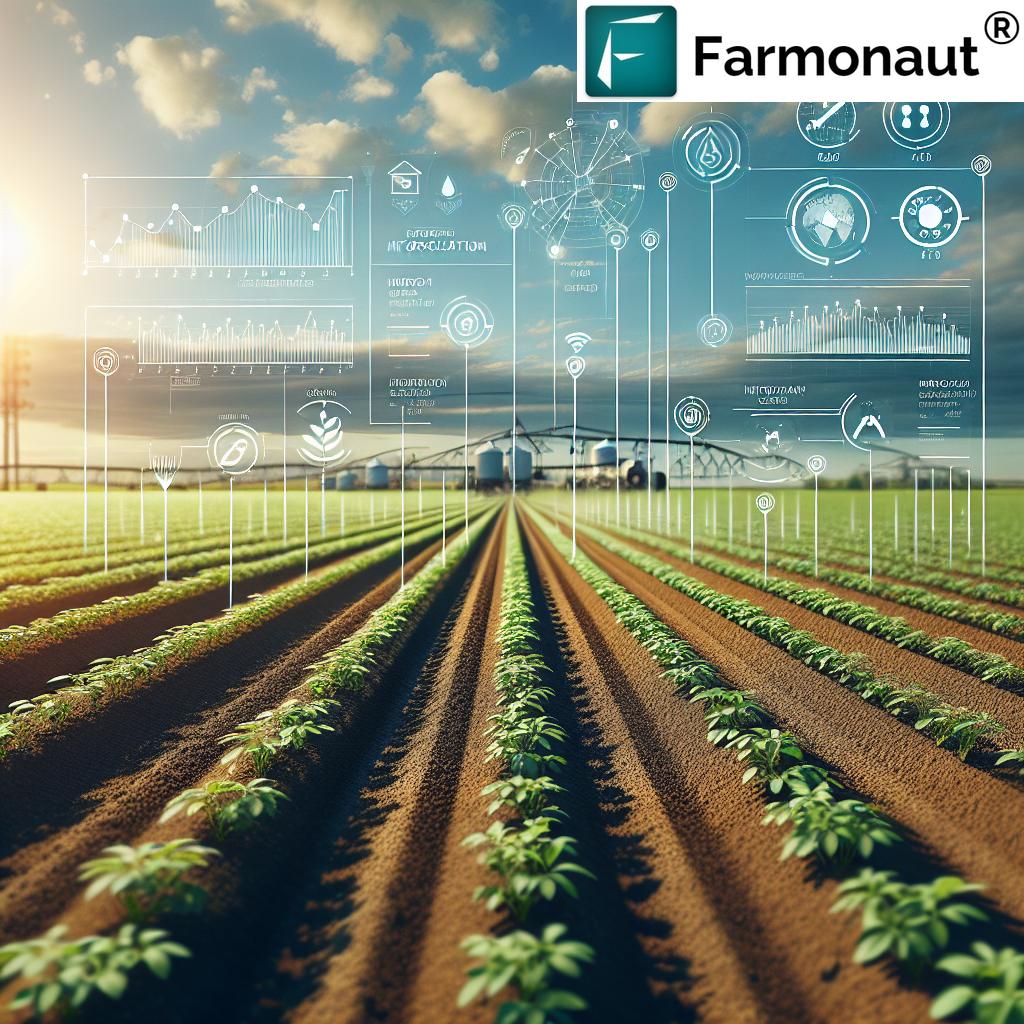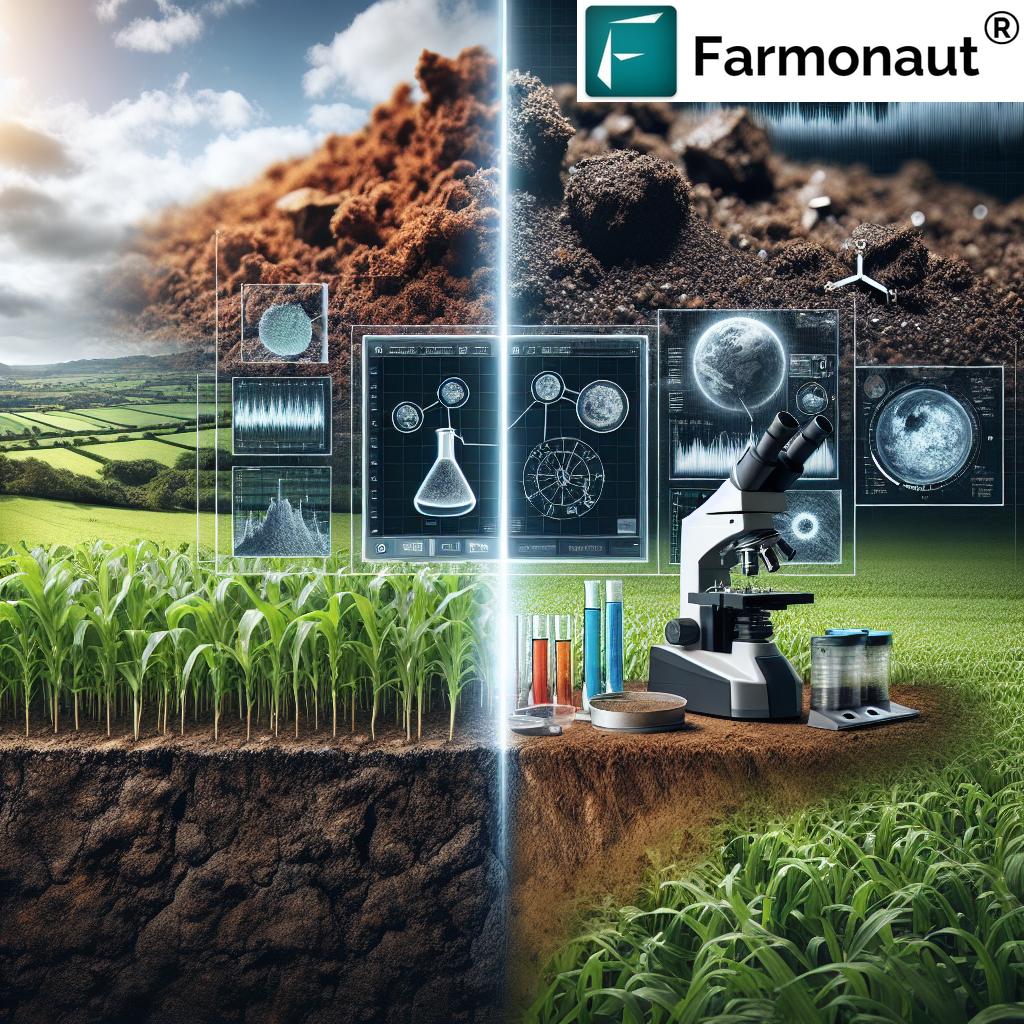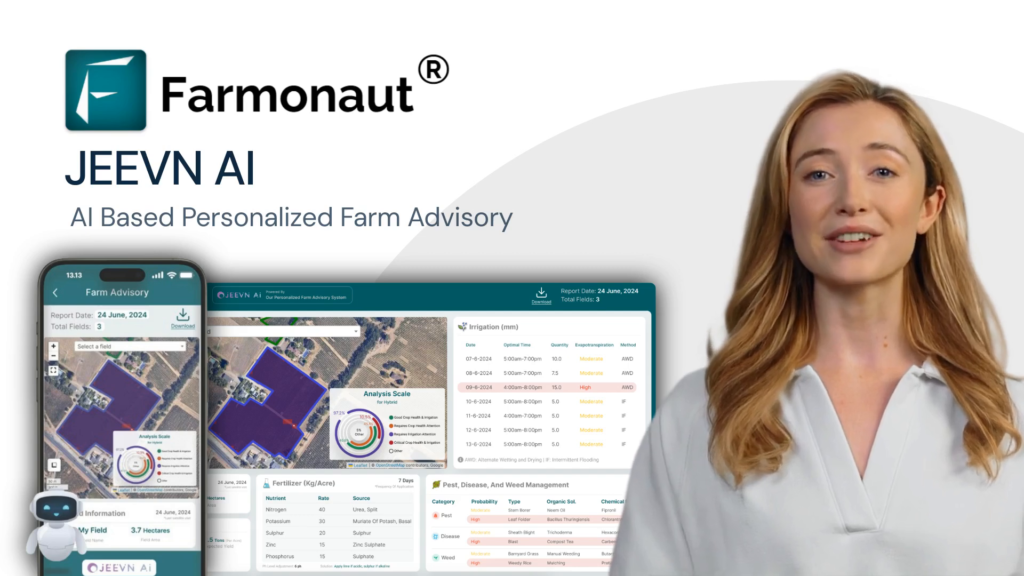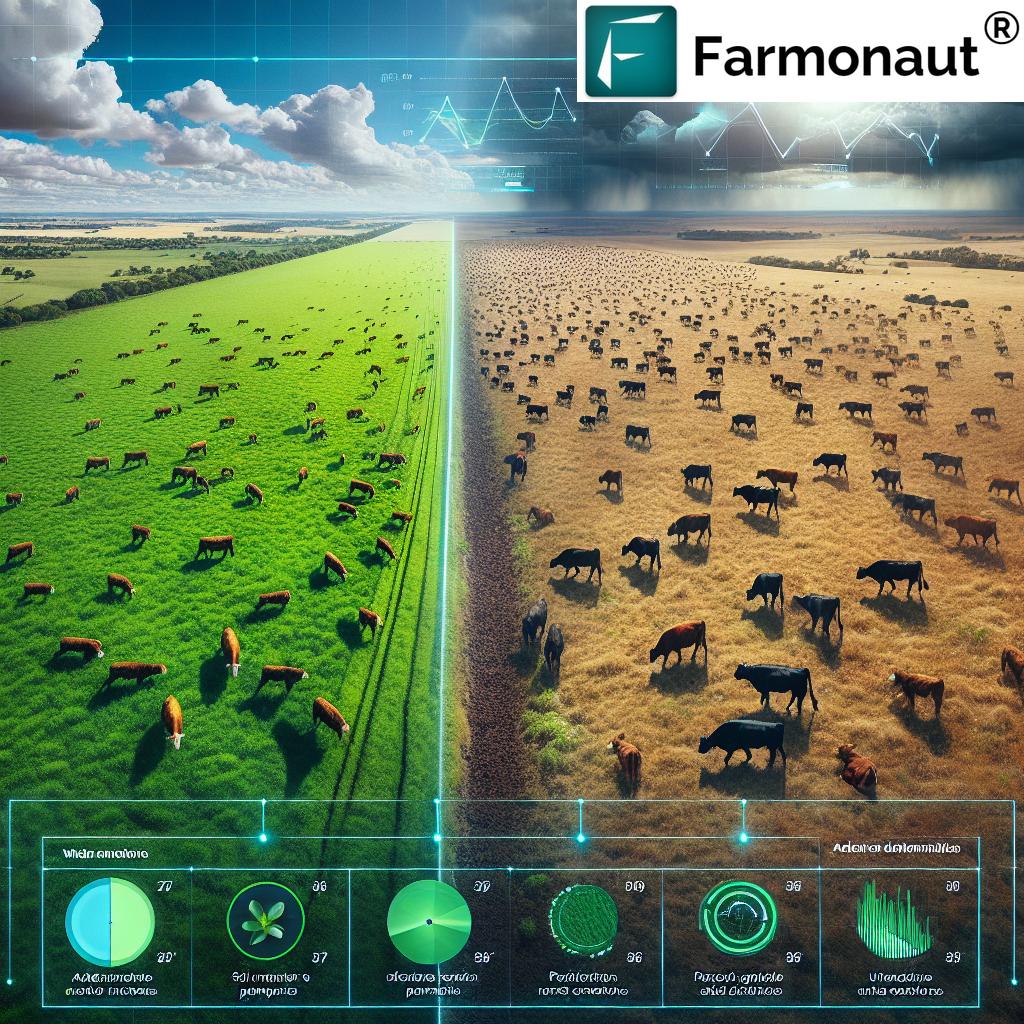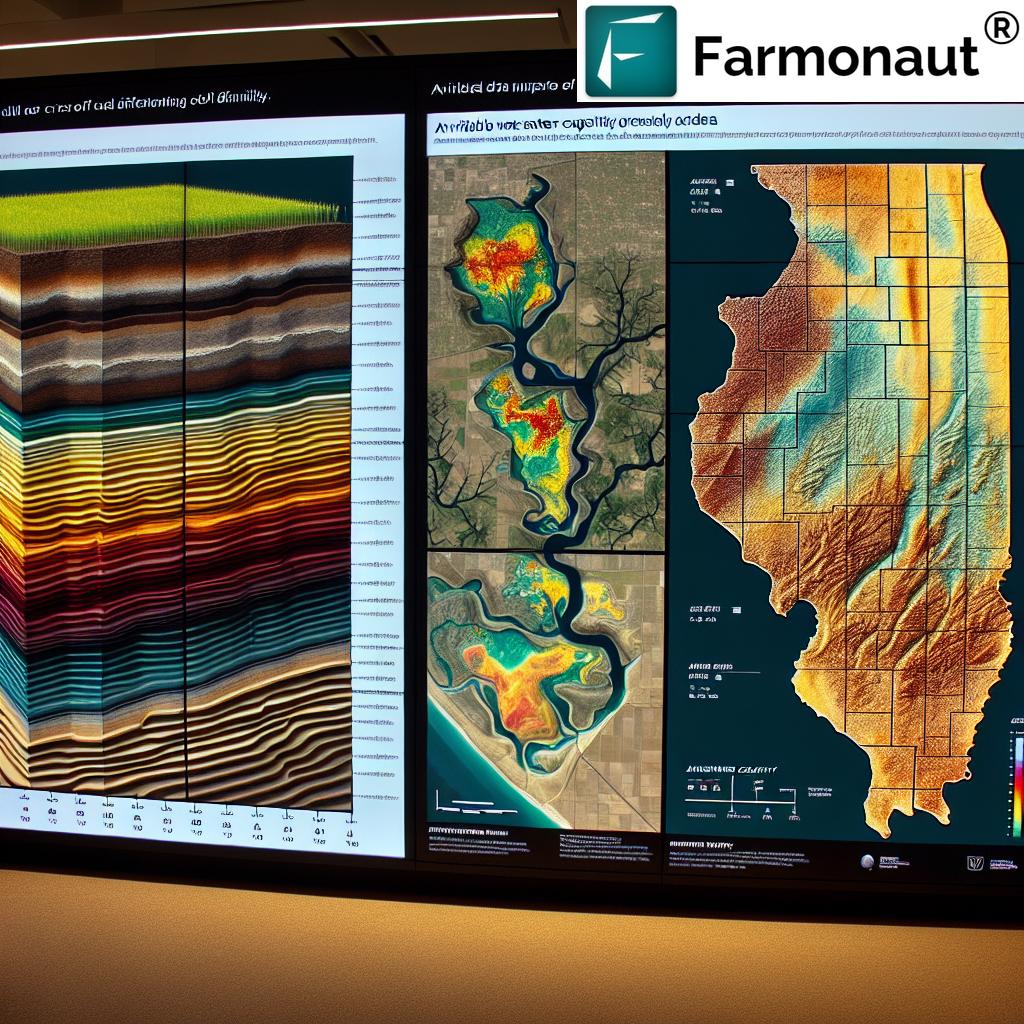How Precision Agriculture Boosted Oklahoma’s Productivity
Oklahoma’s vibrant and diverse agricultural landscape is undergoing a technological revolution. The emergence of precision agriculture is transforming the way Oklahoma farmers manage crops, resources, and environmental stewardship—leading to stronger yields, smarter efficiency, and a more sustainable future.
In this comprehensive guide, we explore how precision agriculture Oklahoma has redefined advanced agricultural practices through the adoption of smart farming technologies, data-driven decision-making, and the integration of tools like soil sensors, drones, and variable rate technology in farming.
We’ll cover the impact on productivity, environmental benefits, ongoing research, challenges, and the promising future of these digital solutions. Along the way, we’ll highlight how key solutions—like those enabled by Farmonaut—make using these breakthroughs easier and more cost-effective for farms of any size.
- Introduction: Precision Agriculture in Oklahoma
- Technological Advancements in Oklahoma Agriculture
- Impact on Productivity: Key Benefits
- Comparative Impact Table: Oklahoma
- Oklahoma’s Leadership in Research & Development
- Farmonaut & Advanced Smart Farming Solutions
- Challenges & Future Outlook for Precision Agriculture Oklahoma
- FAQ: Precision Agriculture in Oklahoma
- Conclusion: A Smarter, Sustainable Oklahoma
Introduction: Precision Agriculture in Oklahoma
Oklahoma agriculture is at the crossroads of tradition and technology. Across more than 78,000 farms and over 34 million acres of diverse crop, pasture, and rangeland, farmers face ever-mounting pressure to boost productivity, conserve scarce resources, and maintain the health of soil and waterways.
Precision agriculture—also known as digital farming or smart farming—is the game-changing answer. By leveraging a suite of advanced technologies, including GPS-enabled equipment, variable rate applications, smart sensors, drone technology in agriculture, and remote sensing for farming, Oklahoma’s agribusinesses can enhance efficiency, optimize the use of fertilizers and pesticides, and deliver more food with less environmental cost.
Now, let’s explore the core technological advancements in detail, their measurable impact, and the pivotal role of innovative platforms like Farmonaut.
Technological Advancements in Oklahoma Agriculture
The adoption of precision and digital agriculture tools has been transformative across the Oklahoma landscape. Here’s how innovative systems are being deployed and what makes them essential for enhancing farm management and productivity.
1. GPS and Auto-Guidance Systems
- Global Positioning System (GPS) has revolutionized navigation and operation of agricultural equipment.
- With auto-guidance, tractors and implements operate autonomously, ensuring accurate planting, fertilizing, and pesticide applications.
- This approach minimizes overlap, greatly reduces input waste, and optimizes field coverage, leading to resource conservation and costs savings.
According to Oklahoma Ag Classroom, self-guidance systems give farmers the confidence of precise operation, even in the dark or under tough field conditions—making every pass efficient and accountable.
2. Variable Rate Technology (VRT) in Farming
- VRT allows the application of fertilizers, pesticides, and even water at different rates across a field—ensuring that each area receives the exact amount needed for optimal growth.
- By utilizing a combination of soil sensors, satellite imagery, and field data, VRT tools empower farmers to reduce costs and minimize resource waste.
- Less runoff and overspray mean improved environmental management.
Innovation in efficient farming technologies puts Oklahoma farmers in the driver’s seat—customizing input application rates to match soil and crop needs.
3. Drone Technology in Agriculture: UAVs
- Unmanned Aerial Vehicles (UAVs), commonly called drones, are swiftly becoming the eyes in the sky for Oklahoma’s farmers.
- Equipped with multispectral sensors, drones monitor crop health, detect diseases, and assess soil moisture from an aerial perspective.
- Timely, high-resolution imagery enables farmers to act quickly—from adjusting irrigation to targeted pest control—enhancing yields and minimizing losses.
Learn more about precision agriculture solutions with drones and why they are transforming crop monitoring in real time across Oklahoma’s fields.
4. Remote Sensing & Satellite Imagery
- Satellite-based technologies power a new era of remote sensing for farming.
- By capturing data on vegetation health (NDVI), soil moisture levels, and field conditions, satellite platforms offer farmers, agribusinesses, and extension services critical insight to improve decision-making.
- Platforms like Farmonaut provide instant access to historical trends, real-time alerts, and actionable advice.
Advanced agricultural practices supported by aerial data help in monitoring broad-acreages, identifying stress, and optimizing the application of fertilizers and irrigation.
5. Soil Health Management & Sensor Technology
- Soil health management depends on understanding real-time moisture levels, nutrient availability, and soil conditions.
- Smart sensors deployed across Oklahoma fields continuously monitor and record soil conditions, enabling farmers to optimize irrigation and fertilizer decisions.
- Improved root health and reduced leaching and runoff are direct benefits—key for environmental sustainability.
Impact on Productivity: Key Benefits of Precision Agriculture Oklahoma
The widespread adoption of precision agriculture in Oklahoma has driven unprecedented gains in efficiency, productivity, cost control, and environmental stewardship. Below, we break down the core advantages—and what they mean for farming businesses and the state as a whole.
1. Crop Yield Improvements
- Oklahoma has seen average crop yields increase by up to 20% in the last decade, as farmers make better, data-driven decisions and reduce unproductive input waste.
- Optimized planting, targeted nutrient management, and advanced irrigation are all essential for making each acre more productive.
- Farms using precision systems—from variable rate technology in farming to advanced satellite monitoring—report better results with less effort.
2. Cost Savings & Resource Management
- Smart technologies allow farmers to apply fertilizers, pesticides, and water only where and when necessary. This means lower input costs, increased ROI, and enhanced long-term sustainability.
- Reduced fuel, labor, and equipment wear contribute to lower overhead.
- For example, through efficient irrigation systems and VRT, many Oklahoma producers have cut fertilizer use by nearly 15% and seen up to 20% savings on water costs (source).
3. Environmental Sustainability Practices
- Targeted input application minimizes runoff—which protects soil health and water supplies.
-
Environmental impact is reduced through:
- Lower greenhouse gas emissions (from precise fertilizer and fuel use)
- Improved soil conservation (with cover crop adoption and smart rotation)
- Less pesticide leaching into waterways
- Focused health monitoring leads to prompt action—reducing the need for broad, blanket treatments and supporting ecological balance.
For farms aiming to make, measure, and communicate their environmental progress, Farmonaut offers an easy-to-use Carbon Footprinting tool.
This solution allows producers to track their emissions, optimize resource use, and transparently report improvements for compliance and supply chain sustainability.
Comparative Impact Table: Oklahoma’s Precision Agriculture Technologies
| Technology Implemented | Estimated Yield Increase (%) | Estimated Resource Savings (%) | Sustainability Impact |
|---|---|---|---|
| Soil Sensors & Smart Monitoring | 10–15% | 15–20% (water), 10–18% (fertilizer) | Strong: Improved soil health, less leaching, focused inputs |
| Drone Monitoring & Imaging | 7–12% | 5–10% (sprays); rapid disease detection | Moderate: Early intervention, disease/pest reduction |
| Variable Rate Irrigation & Technology (VRT) | 12–20% | 20–25% (water), 15% (fertilizers) | High: Reduced runoff, optimized water/fertilizer use, less CO₂ |
| Autonomous Tractors & GPS Auto-Guidance | 5–10% | 4–8% (fuel, time) | Good: Less fuel burned, lower compaction, reduced overlap |
| Satellite Remote Sensing Platforms | 10–14% | Up to 8% (varied inputs) | Strong: Ongoing monitoring, sustainable practices support |
For large-scale plantation planning, remote monitoring, and resource optimization, Oklahoma’s farmers can leverage advanced remote sensing and management solutions via the Farmonaut Large Scale Farm Management platform. This app empowers producers to track multiple fields, receive vegetation health updates, and manage operations on-the-go.
To efficiently manage fleets and agricultural logistics—from tractors to delivery trucks—explore Farmonaut’s Fleet Management tools. Optimizing farm vehicle movements leads to reduced operational costs and improved safety for modern Oklahoma agribusinesses.
Oklahoma’s Leadership in Research & Development on Precision Agriculture
Oklahoma State University (OSU) is a national leader in agricultural research and innovation. Their efforts power many of the tools and practices driving precision agriculture Oklahoma forward:
Soil Fertility & Nutrient Management
- Sensors and data-driven algorithms developed at OSU are enabling truly precise fertilizer use—matching crop demand without overuse—and directly supporting traceability programs.
- These advances help Oklahoma’s farms both sustain productivity and improve environmental protection.
Virtual Fencing for Livestock Management
- OSU is pioneering virtual fencing systems to control cattle grazing patterns. This innovation allows for dynamic management of pastures—with positive impacts on soil conservation and biodiversity.
- Extended rest periods and optimized rotations result in improved forage growth and landscape health.
Efficient Irrigation Systems & Affordable Sensors
- OSU researchers help develop affordable soil moisture sensors to enable smart irrigation, vital for Oklahoma’s variable climate.
- Accurate moisture data means crops get water when needed, conserving water and reducing costs.
Learn more in this OSU Research Matters article.
Financial stability is a major concern for Oklahoma agriculturists. Crop loans and insurance approvals become more robust and rapid with summer satellite verification available in Farmonaut’s Crop Loan & Insurance tools.
Farmonaut & Advanced Smart Farming Solutions for Oklahoma
As precision agriculture Oklahoma accelerates, platforms like Farmonaut make smart farming technologies accessible to every farm—big or small, row crop to rangeland. Here’s how we empower producers across the Sooner State:
Farmonaut’s Affordable Precision Agriculture Platform
- We use multispectral satellite imagery to monitor crop health, soil moisture, and field conditions in real time.
- Our platform includes AI-powered advisory systems (Jeevn AI) for customized crop recommendations and forecasting.
- We support blockchain-based traceability for transparent supply chains.
- We provide fleet & resource management tools to reduce costs and ensure the safety of agricultural vehicles.
- We help track carbon emissions and sustainable practices for farms seeking eco-certification or consumer trust.
Our mission: Make innovative technology available and affordable to every farmer, boosting productivity and sustainability statewide—without expensive hardware or steep learning curves. We offer:
- Subscription plans for individual farmers, cooperatives, agribusinesses, and government agencies—so any size operation can benefit.
- App-based access on Android, iOS, and any browser for easy remote monitoring and management.
- API integration for agritech developers and organizations—extend Farmonaut’s reach into your own agricultural systems through our Satellite Weather API and Developer Docs.
Our focus on Oklahoma’s needs—from soil health management to variable rate technology in farming—drives tangible improvements in yield, resource efficiency, and environmental outcomes.
Challenges & Future Outlook for Precision Agriculture Oklahoma
Key Adoption Challenges
- High Initial Investment: Many technologies require upfront spending, which can be steep for small producers.
- Complex Data Management: Systems generate substantial data—requiring proper training, interpretation, and digital tools for real benefit.
- Integration with Existing Practices: Ensuring compatibility between various platforms and older farm practices can add complexity.
- Connectivity Barriers: Rural broadband gaps can impact the seamless use of cloud-based solutions and real-time monitoring.
A Future-Focused Approach
Despite these hurdles, Oklahoma’s path forward is bright—
With ongoing research, lower-cost tools, and active policy support, precision agriculture is set to become more accessible. A new generation of smart farming adopters, supported by:
- Technological Advancement: Ongoing development of more affordable, user-friendly technology will bring precision agriculture into the mainstream.
- Education & Training: Extension agencies will offer more targeted workshops, digital resources, and hands-on support.
- Government Incentives: State and federal initiatives could further ease investment and transition.
- Stronger Sustainability Initiatives: With an amplified focus on sustainable outcomes and stewardship, more farms are measuring and sharing progress through digital traceability solutions.
By combining community knowledge with cutting-edge innovation, Oklahoma farmers lead the charge in building a more resilient, smart, and climate-smart agricultural future.
FAQ: Precision Agriculture in Oklahoma
What is precision agriculture?
Precision agriculture is the use of advanced technologies (like GPS-guided tractors, sensors, drone mapping, and satellite imagery) to make farming decisions that optimize crop yields, minimize input waste, and enhance sustainability—tailored to each area of a field or farm in Oklahoma.
Why are Oklahoma farmers adopting smart farming technologies?
Oklahoma’s climate, diverse soil types, and economic pressures mean that precision practices deliver real value: better yields, lower costs, targeted input use, and stronger environmental stewardship.
Which technology offers the biggest gains for my Oklahoma farm?
For most, starting with GPS auto-guidance or soil health management sensors pays the fastest dividends. As operations scale, adding drone monitoring, variable rate fertilizer tools, and satellite-based apps like Farmonaut multiplies the benefits and integrates data for the whole farm.
How does Farmonaut support precision agriculture in Oklahoma?
We offer Oklahoma farmers, ranchers, and agribusinesses access to affordable, subscription-based satellite monitoring, AI advisory, traceability, and resource management tools. All are accessible via web, Android, and iOS apps—making advanced digital agriculture simple and scalable.
Are there affordable options for small-scale Oklahoma farmers?
Yes. With platforms like Farmonaut, farmers can access satellite and AI advisory services for any farm size—without expensive hardware. Flexible pricing means any Oklahoma farm can benefit.
How can I start using precision agriculture solutions?
Download the Farmonaut web, Android, or iOS app, or reach out to your nearest Oklahoma State University extension service for field workshops and expert advice.
Conclusion: A Smarter, Sustainable Oklahoma—Powered by Precision Agriculture
The rise of precision agriculture Oklahoma is a testament to the state’s commitment to innovation, stewardship, and prosperity for all of its farmers and communities. Through the adoption of smart farming technologies—from soil and crop sensors to drones, satellite apps, and data-driven platforms like Farmonaut—Oklahoma has experienced significant improvements in crop yield, resource efficiency, and agricultural sustainability.
The road ahead promises even more opportunity:
- Affordable digital tools will empower more farms, regardless of size or starting point.
- Ongoing research ensures Oklahoma stays at the forefront of advanced agricultural practices and environmental stewardship.
- Statewide education and extension support democratizes knowledge and best practices at scale.
As Oklahoma’s agricultural landscape continues to evolve, we urge all producers—from family operations to large agribusinesses—to explore, embrace, and benefit from precision agriculture. The result is a more resilient, profitable, and sustainable farming community, prepared to meet the challenges of the future.
Ready to see what digital agriculture can do for your farm?
Start optimizing your yields, resources, and sustainability with Farmonaut’s precision agriculture tools—designed for Oklahoma’s future.





